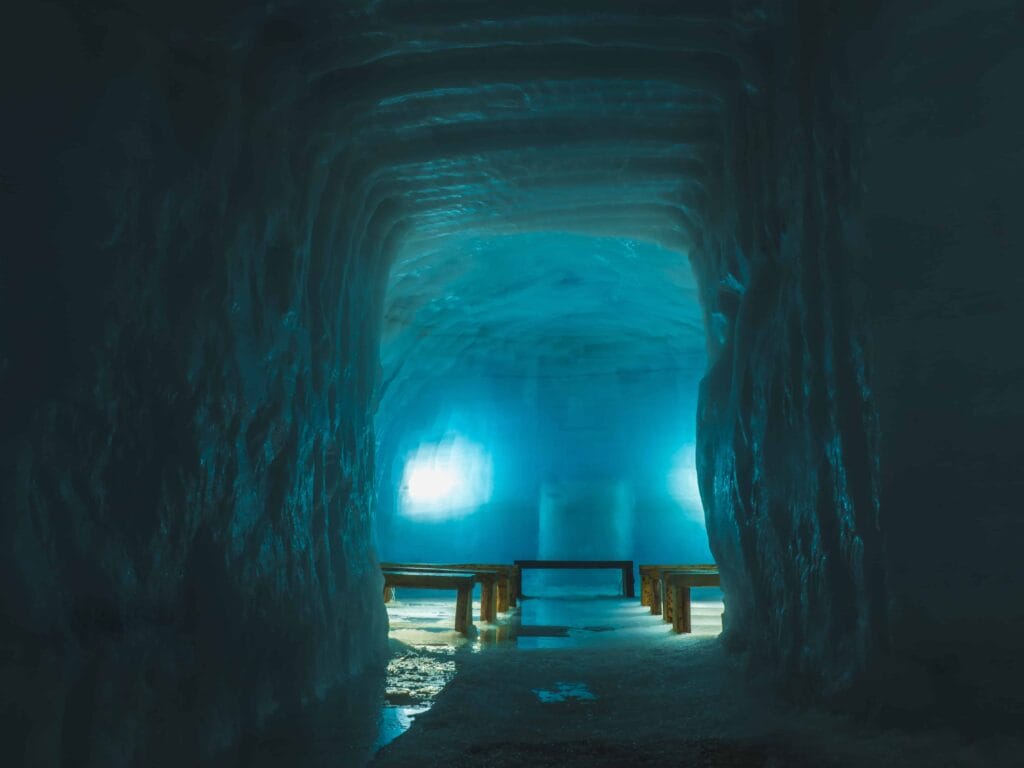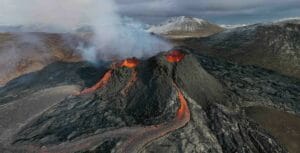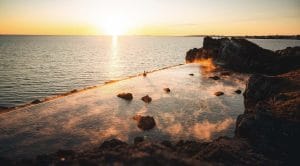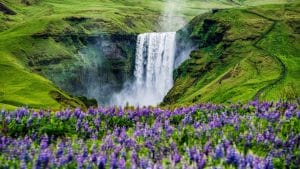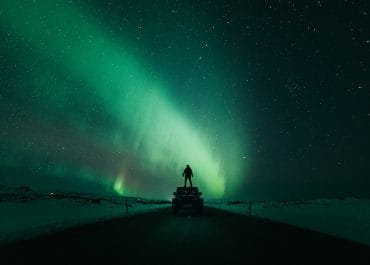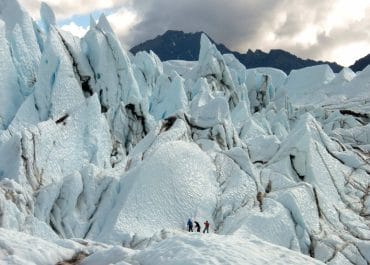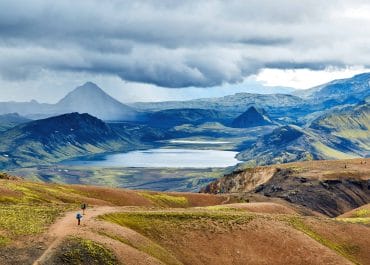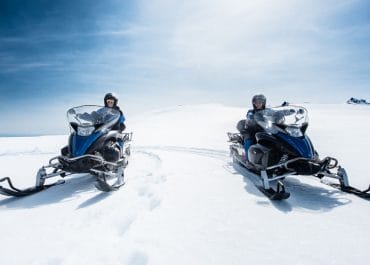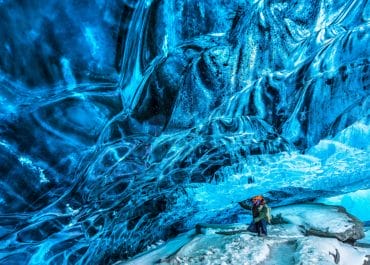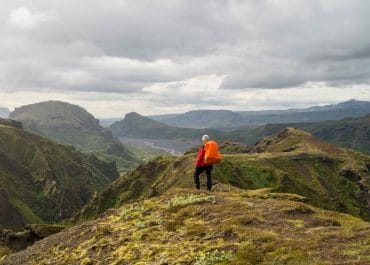Nestled within the captivating landscapes of West Iceland, the Silver Circle beckons intrepid travelers to embark on a journey filled with natural wonders and cultural treasures. Far from the well-trodden paths, this scenic route offers a tapestry of breathtaking vistas, geothermal marvels, and hidden gems waiting to be unearthed. As we set out to explore the Silver Circle, join us in unraveling the secrets of this enchanting region, where cascading waterfalls, historical sites, and soothing hot springs converge to create an Icelandic adventure like no other. Prepare to be captivated by the allure of West Iceland’s hidden gem – the Silver Circle.
Best Locations in the Silver Circle in West Iceland:
1. Deildartunguhver: Largest Geothermal Hot Spring in Europe
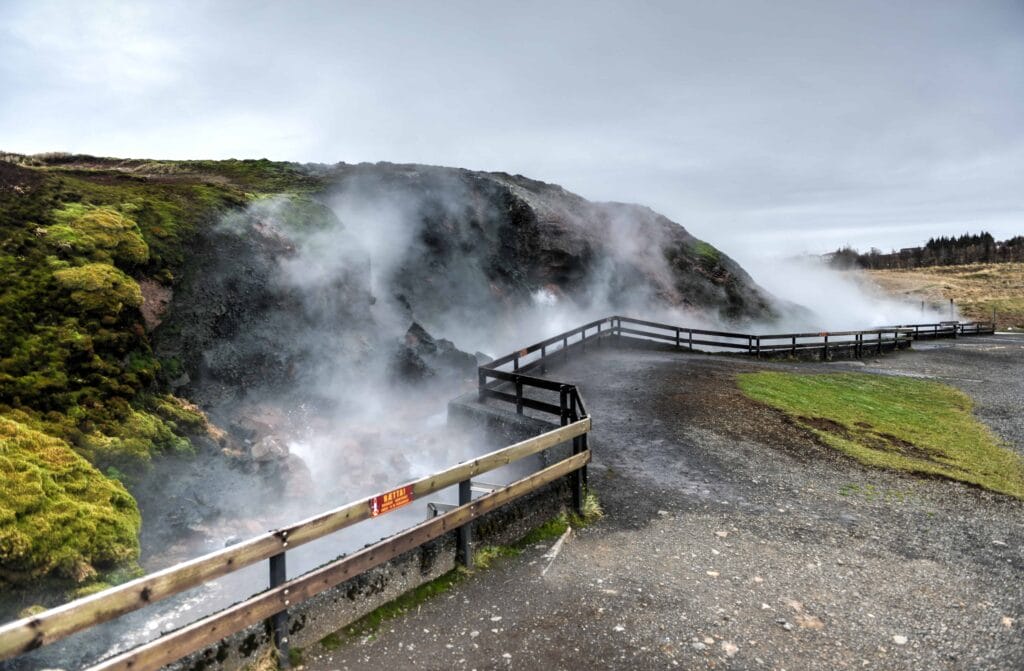
Iceland is often called the land of ice and fire because of snowcapped glaciers and numerous volcanoes. The geothermal activities inside the surface have created a marvelous Icelandic landscape. Deildartunguhver – the largest geothermal pool in Europe – is a perfect example of how geological forces continue to shape the Icelandic land.
It is a series of hot springs, but only 40% of the spring water is visible on the surface. The hot springs’ central area is by a clay hill known as Hverahóll hill. The water flowing at the rate of 180 l/s is extremely hot, touching almost 100°C. The boiling water provides central heating in the homes of nearby towns: Borgarnes and Akranes. Through a 64 KM long pipeline, the hot spring water reaches Akranes. If you have taken a bath while staying in this area, you probably have bathed with this powerful hot spring water. The hot spring is named after a nearby farm, Deildartunga.
This hot water is perfect for a steam bath. Just stand by the hot springs. You will be drenched from the steam. Although it’s challenging to get a good shot of this geothermal pool, you can get a relatively good angle to capture the colorful rocks surrounding the hot spring. The red-color rocks and green mosses on them create a beautiful contrast. You will see a special kind of deer fern that grows only in Deildartunguhver.
The water is boiling hot so avoid getting too close to the hot spring. There is a railing right in front of the Deildartunguhver hot spring for visitor’s safety.
2. Krauma Spa
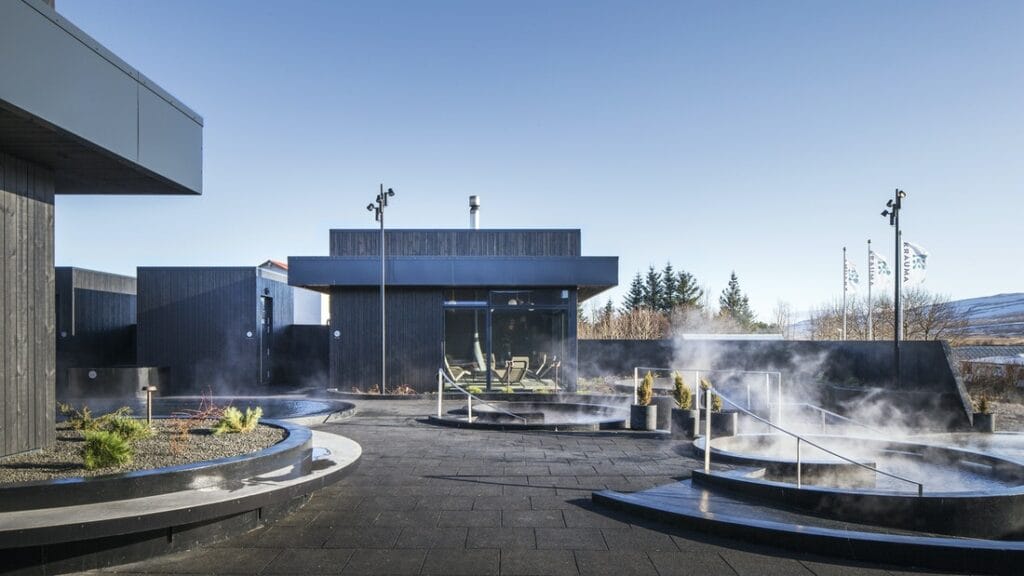
Krauma spa is a splendid new addition to Deildartunguhver geothermal spring. The spa remains open all year round; it consists of 6 baths. Five out of the six hot water pools receive their water from Deildartunguhver hot spring, while the last one is a cold water pool. Take a daring dip into the cold water pool.
It’s a great idea to submerge yourself in the Kramua spa while observing the beautiful view. The water temperature remains at an ideal 38-39 degrees. It’s an incredible experience to soak into the warm water from Europe’s most powerful geothermal spring, Deildartunguhver. Changing and relaxation rooms are nearby pools. You would also love to have lunch/dinner at the Krauma restaurant, offering local as well as international cuisines.
3. Árhver Hot Spring
Arhver is a natural wonder – a hot spring right in the middle of the Reykjadalsá river. Although it is one of the least visited sites on the Silver Circle, soaking in this little natural spring is worth your time. The hot spring is hardly visible from afar. The only indication that there exists a geothermal pool is steam coming from the river.
4. Reykholt
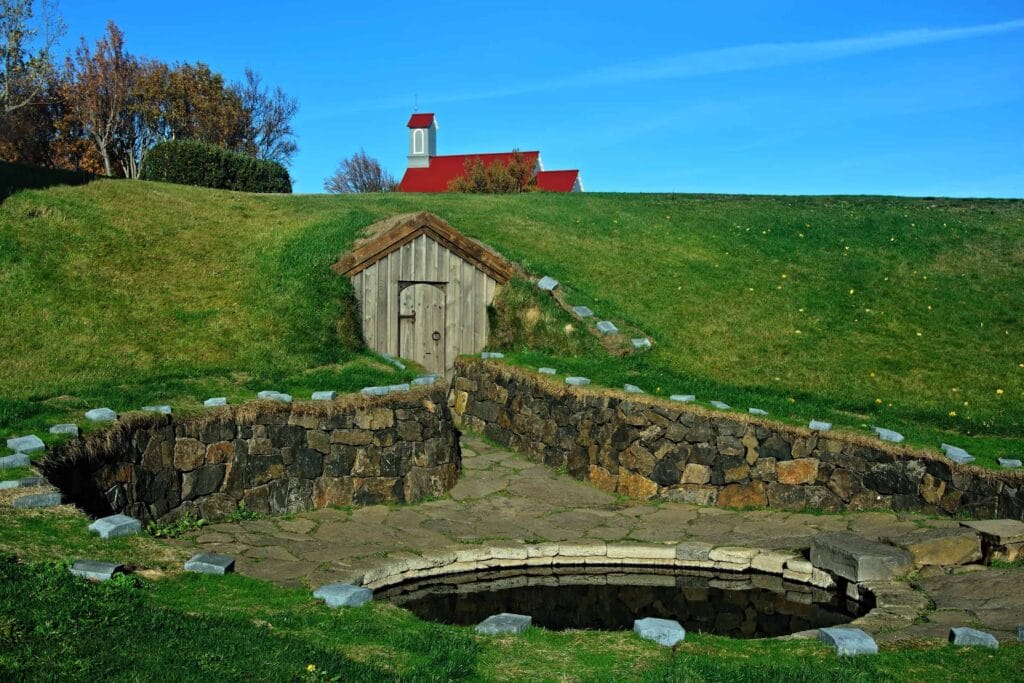
Your next stop on the Silver circle is a historical site, Reykholt. It was home to one of the most powerful and richest men, Snorri Sturluson (1179-1241).
Reykholt used to be an educational and cultural center during medieval times. Snorri was a multitalented individual who lived between the late 11th century and early 12th century. He was a politician, businessman, writer, poet, and historiographer. On top of that, he had enormous wealth during the Age of the Sturlungs. He lived in Reykholt and was assassinated by the men claiming to be the agents of Norway. However, Iceland’s most influential person had left a deep impression on Icelandic culture through his writing. The Prose Edda is thought to have been compiled by him. The stories and legends in the Prose are a significant source of today’s Norse methodology.
To quote, “A sword age, a wind age, a wolf age. No longer is there mercy among men.”― Snorri Sturluson, The Prose Edda.
The archaeological site, Snorralaug, is also located in Reykholt.
5. Hraunfossar Waterfalls
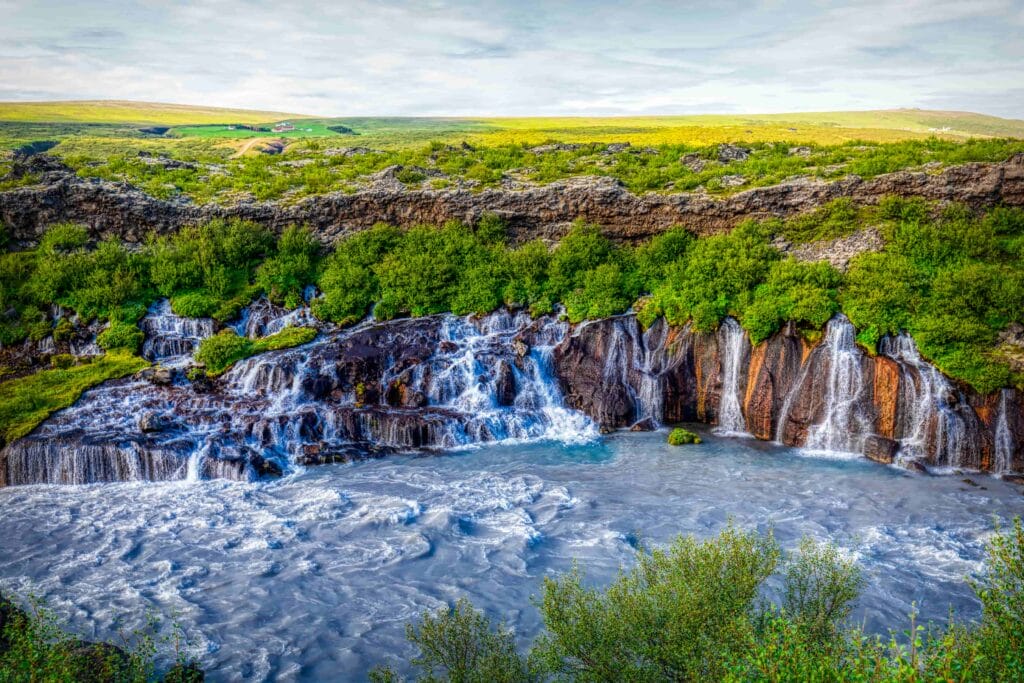
You will find many waterfalls and natural pools while on the route of the Silver circle. Hraunfossar waterfalls spread around a 1KM wide area and consist of numerous water springs gushing out from the underneath lava field of Hallmundarhraun. The crystal clear water then joins the Hvita river, originating from the Eiríksjökull glacier. Take your camera out to capture the natural wonder, Hraunfossar waterfalls.
Hraunfossar waterfalls originate from a lava field called Hallmundarhraun, named after a character from the Saga of Grettir. This area is part of the national monuments of Iceland.
6. Barnafoss or Children's Falls
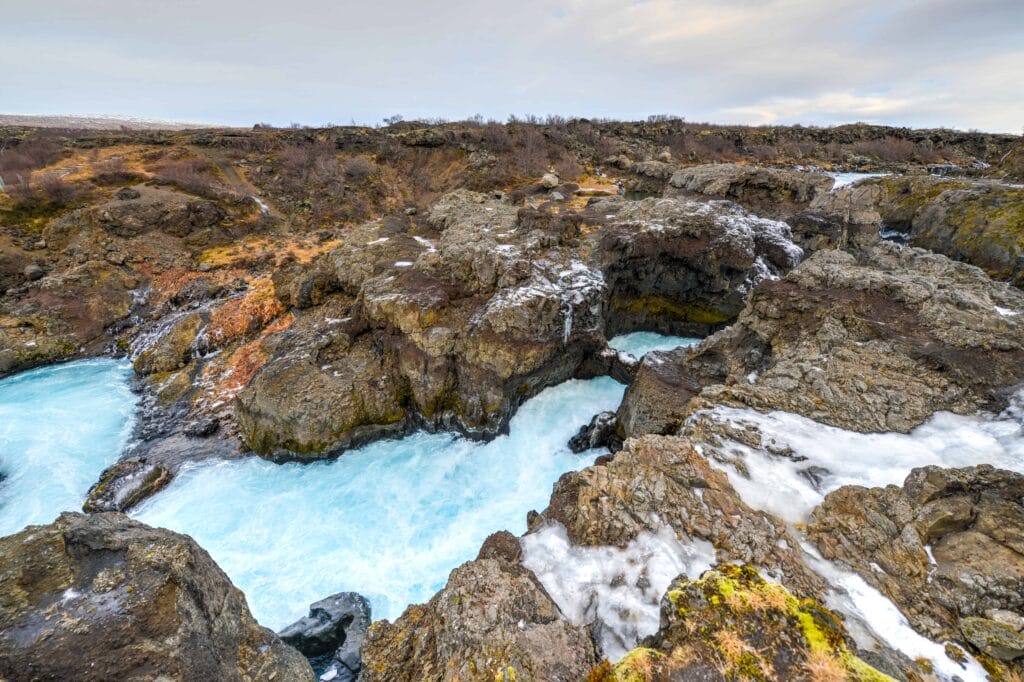
Another beautiful waterfall, Barnafoss, is located nearby Hraunfossar.
The Barnafoss waterfall is located on the river Hvita. Barnafoss seems like a magical site consisting of many trickling waterfalls. These waterfalls show varied characteristics; while one of them flows faster, the other remains peaceful. This is a perfect example of how contrast Icelandic landscape that is ever-changing and vivid spectacles can exist in just a few meters’ distances. There is a pedestrian bridge called Barnafossbrú on the river Hvita. You will get a panoramic view of the waterfalls from this bridge.
According to Icelandic folklore, there used to be a stone arch across the river. A widow with her two adolescents lived on a farm nearby the arch. One day while going to church, she told her children to stay home. But the children following the path of churchgoers reached the stone bridge. When they arrived in the middle of this bridge, they felt dizzy and fell in the Hvita river. When the mother returned from mass, the children were nowhere to be found. She got furious and cursed that no man would ever cross the river alive. Since then, this waterfall is called Barna (child)-foss (fall) or Children’s Falls.
7. Husafell
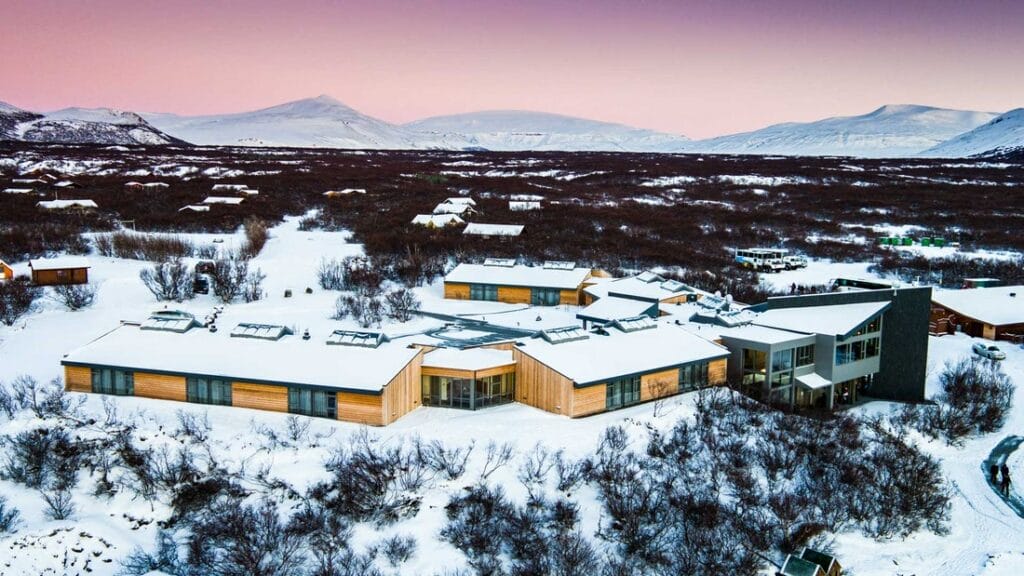
Husafell is one of the earliest settlements in Iceland. The Viking sagas are written all over the place. Here you will find numerous opportunities for adventure and leisure. From ice-caving and lava-caving to canyon baths and a chance to witness magical Northern Lights – discover nature’s splendid work at its best.
If you’re driving by yourself on the Silver circle route, staying a day at Husafell is a great idea. Adventurers and artists flock here to spend their time with the tranquil landscape of lava and pond. Interestingly, the trees here are tall (Icelandic standards) and almost no wind making Husafell an ideal place for hiking.
You can taste your strength with Husafell’s Stone – 180 KG stone called Kviahellan. This 300 years old stone was carved out from a big rock by the strongest man of Iceland, Reverend Snorri (1710-1803).
You will see a beautiful stone artwork by Pall in Husafell, a descendant of Snorri. Pall’s stone works are famous throughout Iceland.
8. Husafell Canyon Baths
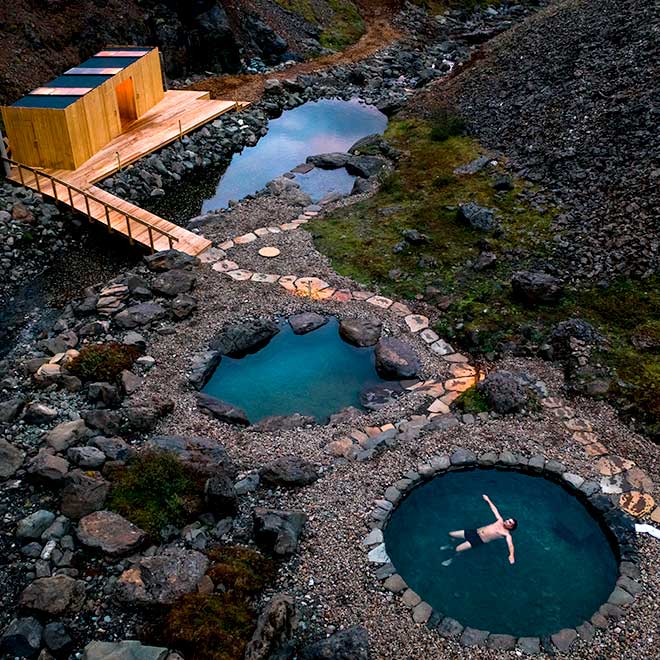
Husafell Canyon Baths beckons as a hidden gem, offering a unique and revitalizing experience in the heart of Iceland. Here are compelling reasons why you should make a journey to Husafell Canyon Baths an essential part of your itinerary:
Spectacular Canyon Setting: Located in a scenic canyon, Husafell Canyon Baths boasts a stunning natural backdrop that enhances the overall experience. The combination of geothermal waters and the picturesque surroundings creates a truly enchanting atmosphere.
Geothermal Relaxation: Immerse yourself in the soothing geothermal waters of Husafell Canyon Baths. The warm and mineral-rich pools provide a therapeutic escape, promising relaxation and rejuvenation amidst the captivating Icelandic landscape.
Architectural Marvel: The baths seamlessly blend modern design with the natural beauty of the canyon. The architecture of Husafell Canyon Baths is not only functional but also enhances the aesthetic appeal of the area, creating a tranquil environment for visitors.
Varied Temperature Pools: With a range of pools offering different temperatures, you can customize your experience to suit your preferences. From warm to hot pools, each one provides a unique sensation, ensuring a tailored and enjoyable soak.
Scenic Views: Enjoy breathtaking views of the surrounding canyon while soaking in the baths. Whether you visit during the day or under the evening sky, the visual allure of Husafell Canyon Baths adds an extra layer of magic to your experience.
Year-Round Accessibility: Unlike some geothermal attractions that may be seasonal, Husafell Canyon Baths are accessible year-round. Whether you’re chasing the Northern Lights in winter or basking in the Midnight Sun during summer, the baths offer a consistent and delightful experience.
Family-Friendly Atmosphere: Husafell Canyon Baths welcome visitors of all ages, making it an ideal destination for families. The diverse pool options cater to everyone, from those seeking a peaceful soak to families looking for a playful aquatic adventure.
Proximity to Natural Wonders: Situated in the vicinity of Husafell, the baths provide easy access to other natural wonders. Consider combining your visit with exploration of nearby attractions, such as glaciers, lava caves, and hiking trails, for a comprehensive Icelandic adventure.
In summary, Husafell Canyon Baths beckon as a destination where the soothing embrace of geothermal waters meets the captivating allure of Iceland’s natural wonders. Whether you’re a solo traveler, a couple seeking a romantic retreat, or a family in search of an inclusive experience, Husafell Canyon Baths promise a memorable and revitalizing journey.
Note: It is necessary to book your tickets to Husafell Canyon Baths in advance.
9. Ice Cave Tour in Langjokull Glacier
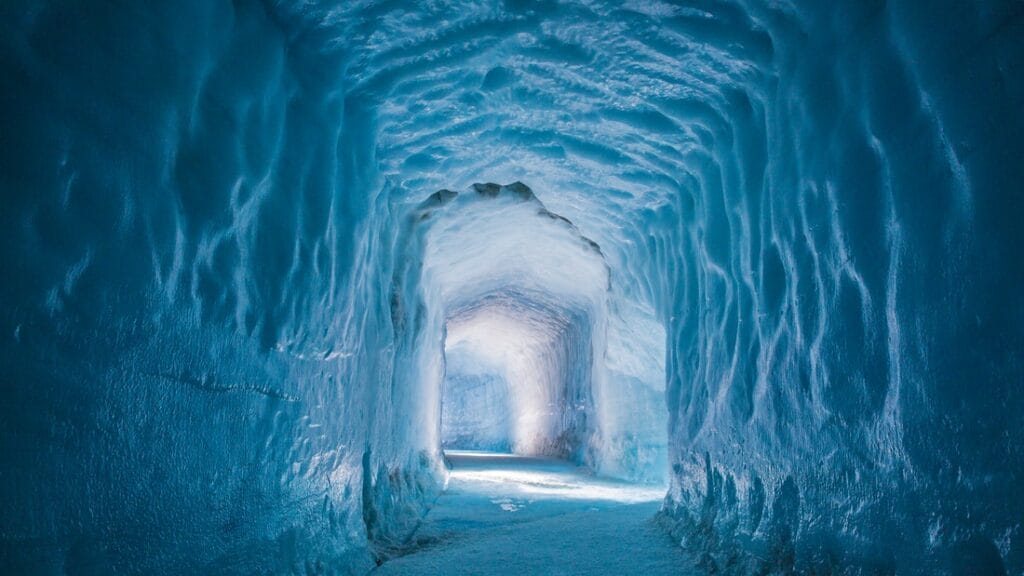
Just an hour’s drive from Husafell is another marvel of Iceland – the world’s largest artificial ice cave. The ice cave tunnel is built inside Langjökull, the second largest glacier of Iceland. The ice cave is called Into the Glacier.
A 20-ton monster truck will take you to the entrance of Langkolull glacier. Then track through a 500m long tunnel inside the glacier. There are five ice-chambers in the tunnel, each with its varied structures such as magnificent crevasses and blue ice formations. It is quite an enthralling adventure to be inside a glacier. You need to join a guided tour to visit this ice cave. Most of the tours start from Húsafell.
Note: You have to book your tickets Into the Glacier in advance.
9. Víðgelmir Lava Cave
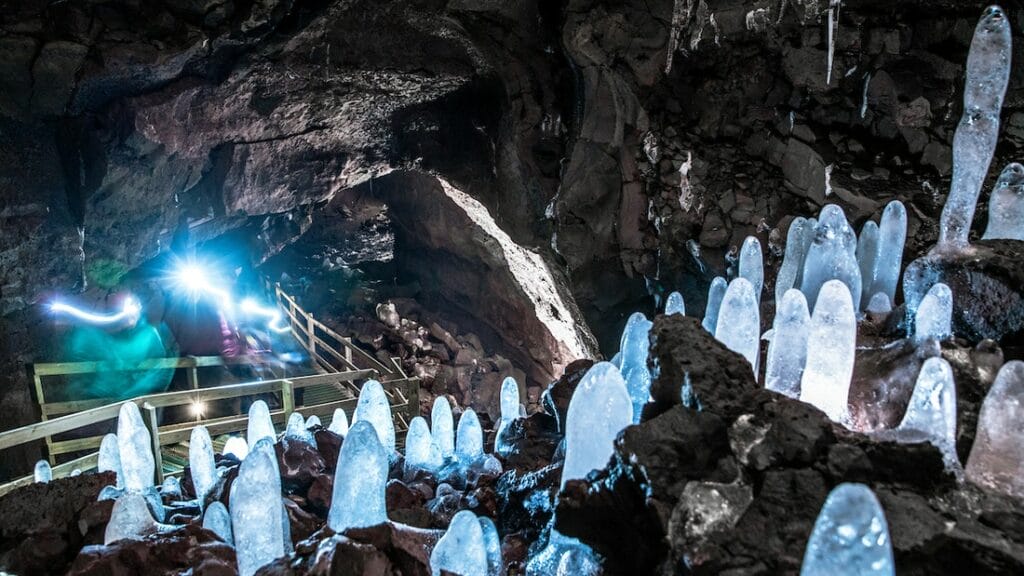
Another cave is a lava cave surrounded by vivid color patterns. The cave is located in the Hallmundarhraun lava field called Víðgelmir. There are two large openings in the Northside, the Víðgelmir runs 1585m long, and some of the most extensive parts of the cave passage are wide enough for two monster trucks to pass at once. That’s why it is by far the largest lava cave in Iceland.
Now the local authorities have added wooden stairs and walkways to make the cave more accessible for people.
Note: We recommend that you book a tour to Víðgelmir lava cave well in advance since the tour is very popular.
10. Þingvellir National Park
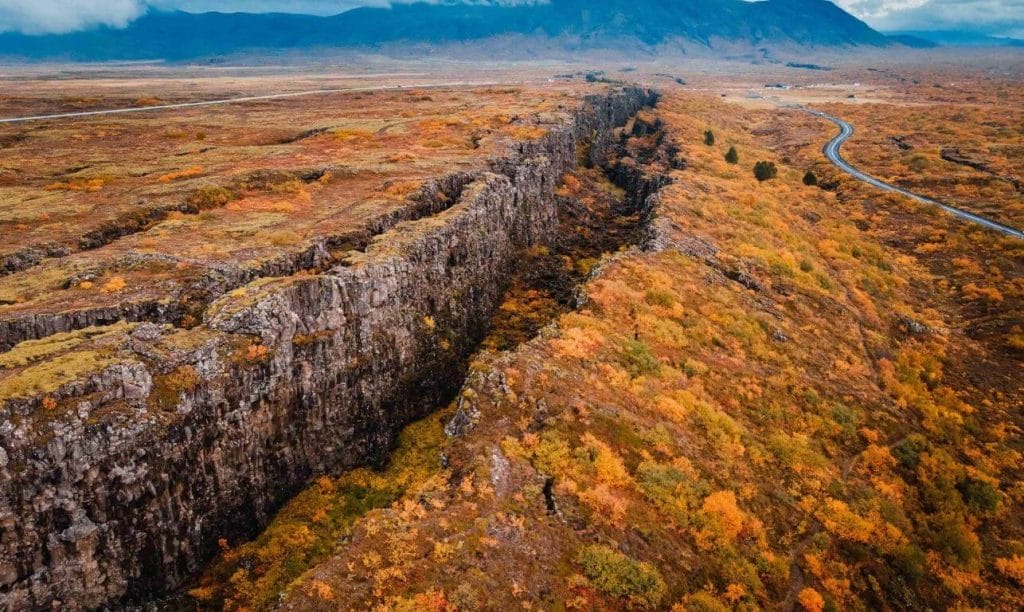
Þingvellir National Park is a historic site and part of the UNESCO World Heritage Site. The Park is uniquely situated along the border between North Atlantic and European tectonic plates.
Þingvellir’s history is pretty much the history of Iceland. The country’s first and probably the world’s oldest parliament, the Alþing, first convened before 930 AD and operated until 1271 AD, laying the foundation of modern Iceland. The Þingvellir continued to signify the unity and independent nature of Icelandic people till the 18th century. It was the scenery of some of the darkest moments as well as significant historical events. It was declared a national park in 1930 due to its enormous significance for Icelandic culture and breathtaking landscapes.
The Park is situated on a very active geologically active Mid Atlantic Ridge. The geological activity inside the surface explains the Park’s magnificent landscape. The tectonic movements’ impact is visible in the Park.
Earthquakes or small tremors are still an everyday phenomenon in Þingvellir. No significant volcanic eruptions in the last 2000 years, but they are not extinct.
Another incredible beauty of the Þingvellir Park is Þingvallavatn lake, situated 1oom above sea level with a surface area of 84 square kilometers. It is the largest natural lake in Iceland, with an average depth of 34m.
The Park is also rich in flora and fauna. It is characterized by birch woodland, 172 species of higher plants, and 52 bird species.
The Þingvellir Park is usually considered a ‘weather paradise.’ The weather in the day remains bearable in summers, but nights can be cold. Winters can be excessively snowy.
It is usually the last stop on the Silver circle route. But there are variations to this route; some visits can be omitted while others are included.
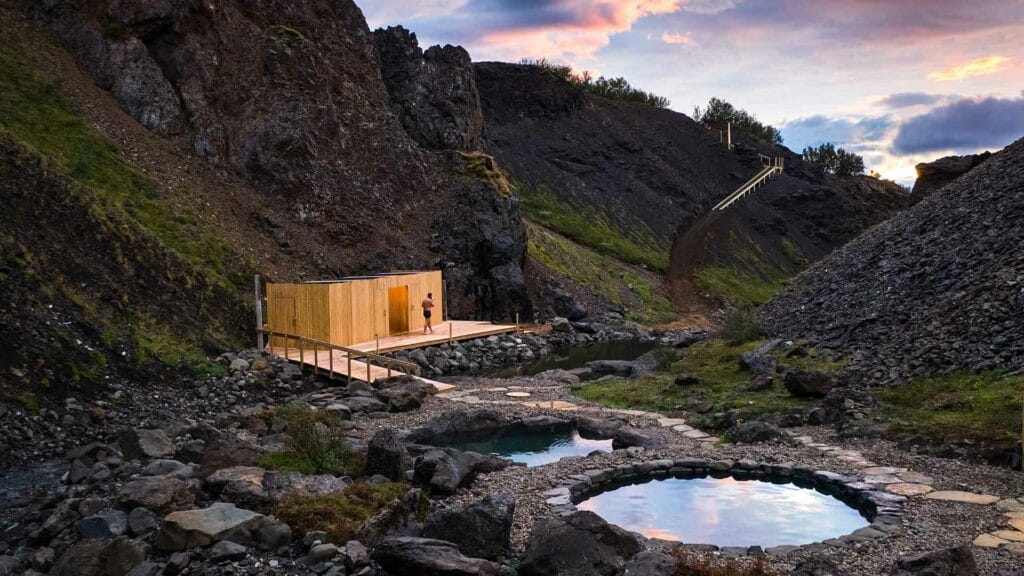
How to explore the Silver Circle?
To explore the Silver Circle in West Iceland, you have two main options:
Self-Drive: Rent a car and embark on a self-driving adventure along the Silver Circle. This allows you the flexibility to explore at your own pace. For assistance in planning your self-driving tour, you can reach out to us via email at info@icelandtravelguide.is.
Guided Tour: Opt for a guided tour departing from Reykjavik. These tours typically cover the key attractions in the Silver Circle and may even include tickets to Krauma Spa, providing a comprehensive and hassle-free experience. This option is convenient for those who prefer a guided exploration with the expertise of local guides.
Choose the method that best suits your preferences and travel style, ensuring a memorable exploration of the Silver Circle in West Iceland.
What to bring when traveling the Silver Circle?
As Icelandic weather is unpredictable, especially in winters, come prepared. Bring warm and waterproofing clothes, a good pair of hiking shoes. Don’t forget to pick your DSLR camera to capture the beautiful landscapes in the frame.
